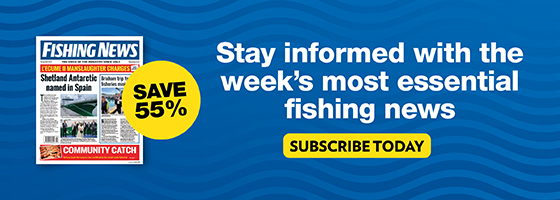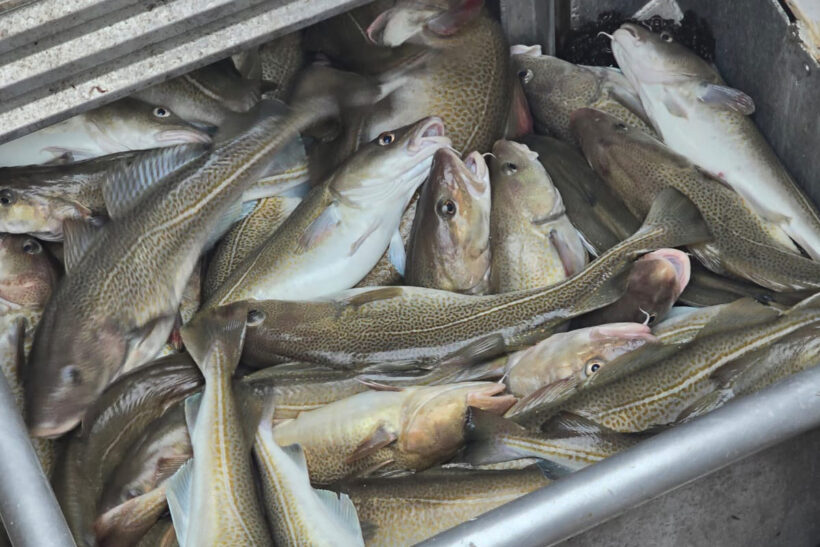Fishermen are facing a cut in Northern Shelf cod of 20% in 2025 compared with 2024.
It follows an agreement between the UK, EU and Norway at trilateral talks in Oslo last week to decide the 2025 TACs for the six shared North Sea stocks the parties manage jointly – cod, haddock, whiting, saithe, plaice and herring. TACs for stocks shared only with the EU are set to be decided at the next round of bilateral discussions.
Defra said the agreement will give the UK 290,000t of fishing opportunities in the North Sea and surrounding waters for 2025 worth up to £310m based on historic landing prices.
The TACs and UK quotas for the five demersal stocks subject to the agreement are:
- Cod: a total TAC of 25,028t, which includes West of Scotland cod. The change last year on Northern Shelf cod to a single TAC with three sub-stocks – Northwestern, Viking and Southern – has complicated how the TACs and quotas are set. Work has been initiated to look at future management of the stocks, including genetic sampling of cod to assess the level of mixing between the sub-stocks. The UK will receive a total of 10,431t of the Northern Shelf cod TAC. The parties also agreed to continue closing cod spawning grounds for cod in 2025 during the first quarter of the year.
- Haddock: a TAC of 112,435t, a 5% reduction on the 2024 TAC. The TAC is to be split between the three haddock management areas, and the UK receives 62,128t of North Sea haddock and 8,610t of West of Scotland haddock.
- Whiting: a TAC for whiting of 139,425t, a 46% increase on 2024 levels. The TAC is to be split between the two whiting TAC management areas, and the UK receives 74,030t of North Sea whiting and 3,106t in the Eastern Channel (VIId).
- Saithe: A TAC of 79,071t, a 7% increase on the 2024 TAC. The TAC is to be split between the two saithe TAC management areas, and the UK receives 8,940t of North Sea saithe and 3,791t West of Scotland. The parties also agreed to ask ICES to assess a new management plan for saithe in 2025.
- Plaice: A TAC of 176,593t, a 14% increase on 2024 levels. The TAC is to be split between the two plaice TAC management areas, and the UK receives 41,228t.
Fisheries minister Daniel Zeichner said he was pleased to have secured a deal worth up to £310m for the UK fleet, while maintaining sustainable levels of stocks for the long-term health of the industry.
Scottish cabinet secretary Mairi Gougeon said she had instructed officials to seek outcomes that were underpinned by the best available scientific evidence, taking into account socio-economic factors, and the complex dynamics of fisheries.
“The agreements reached with the EU and Norway include a number of positive outcomes,” she said. “One of our key priorities going into these talks was to secure appropriate catch limits for Northern Shelf cod, and I am particularly pleased by the outcome on this stock.”
Cod ‘a negative’ – but better than ICES’ 50% cut advice
Mike Park, chief executive of the SWFPA and chair of the cod group of the Northern Fishing Alliance, said the 20% cod cut was ‘a negative’ from the talks. But in moving away from the ICES headline advice and setting the TAC at -20% rather than an earlier -50% recommendation, managers had recognised the problems that would be caused by such a huge cut. Fishing would still follow the MSY approach, he said.
A working group chaired by the UK will provide an overview of current spatial, seasonal and technical measures that promotes the sustainable management of the Northern Shelf stock, he said. The agreement also includes a more detailed look at the genetics of the sub-stocks, to support a better understanding of how they mix.
ICES has stated that the cut in the TAC was needed to protect the weak Southern component of the stock, but Mike Park pointed out that ‘the vast majority of cod’ was caught in IVa (northern North Sea).
“There is very little cod caught in IVbc (central and southern North Sea) – I think last year there was something like 500t captured, which means there is very little effort down there catching cod,” he told Fishing News. “So the risk to the Southern stock is minimal. If there was cod down there, vessels would be there catching it, but they’re not.”
He said there was a slight mitigation of the 20% cut because of a small increase in 2025 in the UK’s share of the overall TAC, and the fleet would adapt to the cut.
“There’s other species out there that vessels can target if they get a chance, like monkfish, where there is going to be quite a significant increase. There’s an abundance of haddock and whiting to catch as well, and there’ll be more Rockall haddock, so there will be areas where the fleet can diversify. We have to work out good management plans so we don’t catch cod above our limit.”
Mike Park added that there would be discussions next year on the joint management of other stocks such as hake and monkfish, which could join the current six trilateral stocks currently shared with Norway and the EU.
Shetland calls for more investment in science
Following the trilateral talks, the Shetland Fishermen’s Association warned that a failure to invest in fisheries science is leading to an unfair reduction of quotas, and an economic loss to the isles.
SFA executive officer Daniel Lawson said: “Quota setting for 2025 has been plagued by scientific uncertainties, with advice for important fish stocks found to contain errors and being re-issued at the last moment.
“The quota cut for cod is due to a lack of understanding about the mixing of different genetic sub-stocks. The swing in herring quota is also disappointing. Despite it apparently being our best-assessed fish stock and monitored for decades, it is a fishery beset by volatile scientific advice – even with continued investment from industry to supply scientists with good data.
“This is not the fault of fishermen, but it is they and their businesses which end up paying the price for scientific shortcomings.
“Fishing crews in Shetland appreciate that both UK and Scottish government negotiators have worked hard in the national interest, but – until we see re-investment in fisheries science – these quota talks, and the livelihoods of our members, will continue to be hampered by uncertainties, unknowns and instability.”
His comments were echoed by Orkney and Shetland MP Alistair Carmichael, who said last week in parliament that Scottish fisheries science has been ‘salami-sliced to death’.
The MP said: “The quota reductions announced will be a source of great frustration to the local fleet. They have argued time and again for better science around the sustainability of stocks in our waters, but
are now bearing the brunt of these reductions. This is where research resources really matter – and we have chronically underinvested in fisheries science here in Scotland.”
This story was taken from the latest issue of Fishing News. For more up-to-date and in-depth reports on the UK and Irish commercial fishing sector, subscribe to Fishing News here or buy the latest single issue for just £3.50 here.
Sign up to Fishing News’ FREE e-newsletter here.






